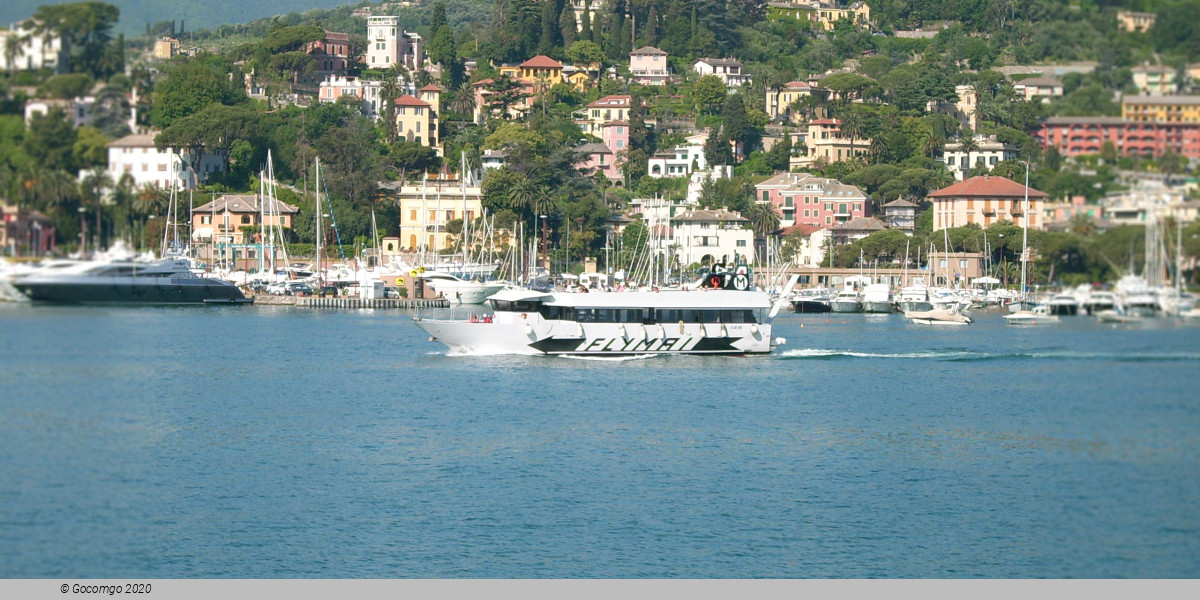Rapallo

Rapallo is a municipality in the Metropolitan City of Genoa, located in the Liguria region of northern Italy. As of 2017 it had 29,778 inhabitants. It lies on the Ligurian Sea coast, on the Tigullio Gulf, between Portofino and Chiavari, 25 kilometers east-south east of Genoa itself. The climate is moderate. Many of the villas are built in the hills that rise immediately behind the city, protecting them from strong northern winds. The Parco Naturale Regionale di Portofino, encompassing the territory of six Ligurian communes, includes the Rapallo area.
The first settlement dates probably from the 8th century BC, although the findings have not clarified if it was Etruscan or Greek. The name of the city appears for the first time in a document from 964. In 1203 the Podestà of Rapallo was created, and the town became a Genoese dominion in 1229, remaining under that aegis until the Napoleonic Wars. Galleys from Rapallo took part to the Battle of Meloria of 1284. On 5 September 1494, it was captured by the Aragonese, but three days later 2,500 Swiss troops ousted them. During the 16th century it was attacked and sacked by the Ottomans and Barbary pirates. To help defend the village against such attacks a castle was built on the seafront. In 1608 Rapallo was made into a Capitaneato (captainship) of its own, as part of the Republic of Genoa. In the late 18th century it was captured by the French who, after several clashes against Austro-Russian troops, in 1805 annexed it to the Apennins region. In 1814 the English freed it, and the following year the city was given to the Kingdom of Sardinia-Piedmont as part of the Duchy of Genoa. In late 1917 the Anglo-Franco-Italian Rapallo Conference met following the disastrous Italian defeat at Caporetto. It was decided to create a supreme war council at Versailles and to shift some French and British troops to the Italian front. On 12 November 1920, Italy and the Kingdom of the Serbs, Croats, and Slovenes (later renamed Yugoslavia) signed the Treaty of Rapallo, 1920, which resolved the frontier issues between them without reference to the other Allies. Italy acquired the strategically important crest of the Julian Alps as its boundary in the northeast. Also concluded at Rapallo was the Russian-German Treaty of Rapallo of April 1922, in which both countries renounced claims to war reparations and renewed diplomatic relations. This agreement marked the emergence of Russia and Germany from the diplomatic isolation caused by World War I (1914–18). During World War II numerous partisans from Rapallo were shot by German occupation troops. Rapallo has been known for its climate that made it over the years the winter residence of preference for most of the affluent Italians living in the North West of Italy. Its proximity to the coast makes for mild winters where people can enjoy easy strolls on the sunny promenade and the golfers can enjoy one of the oldest courses in Italy, opened in 1930.

